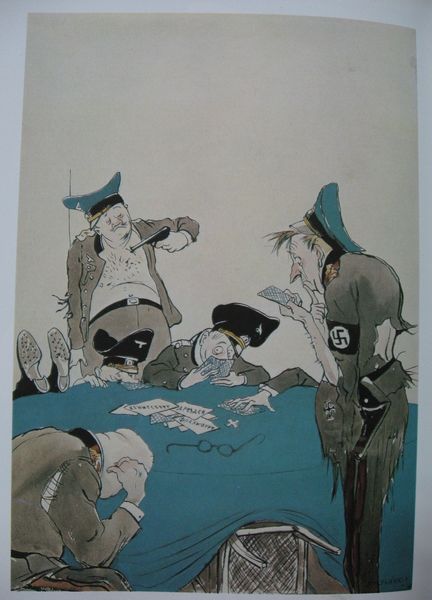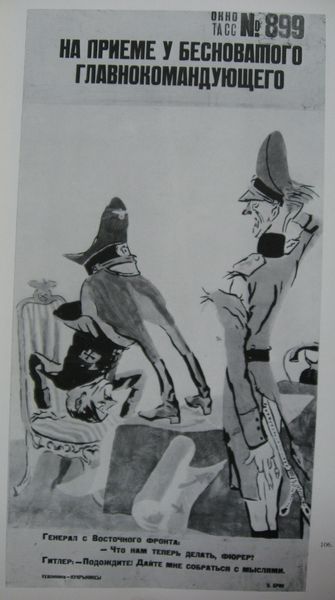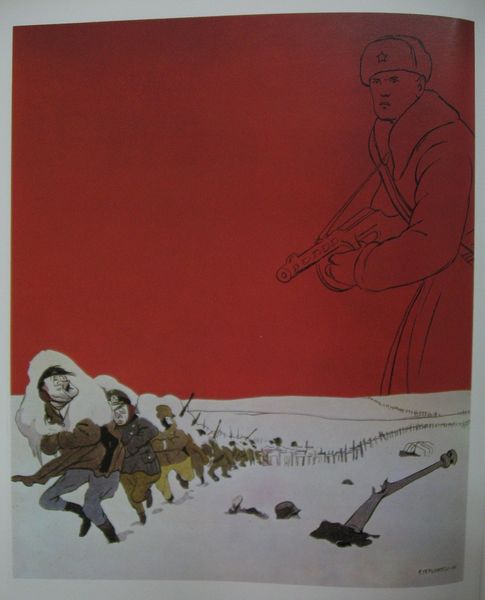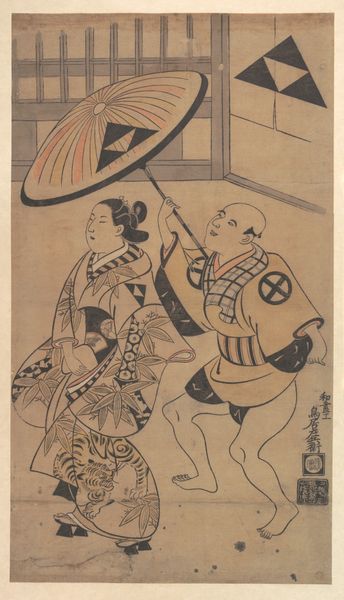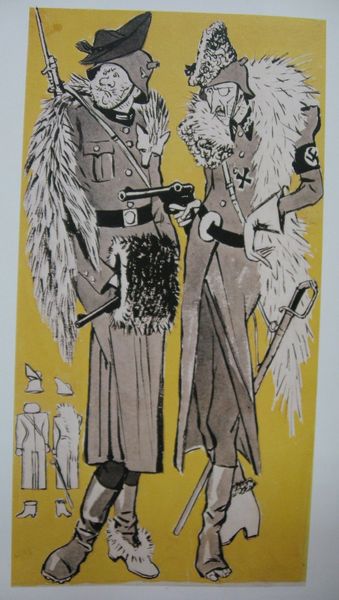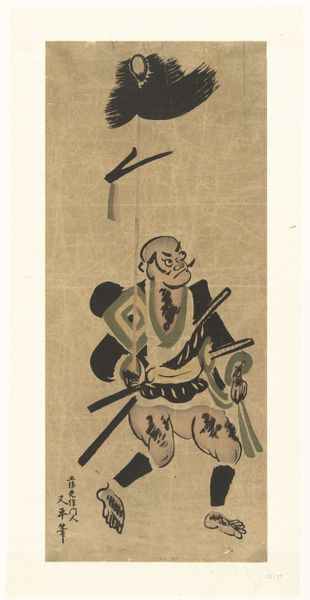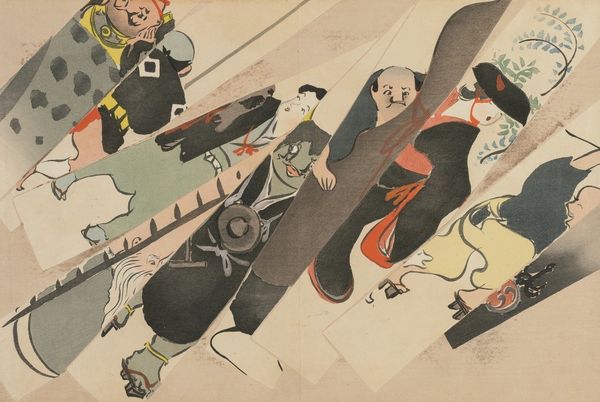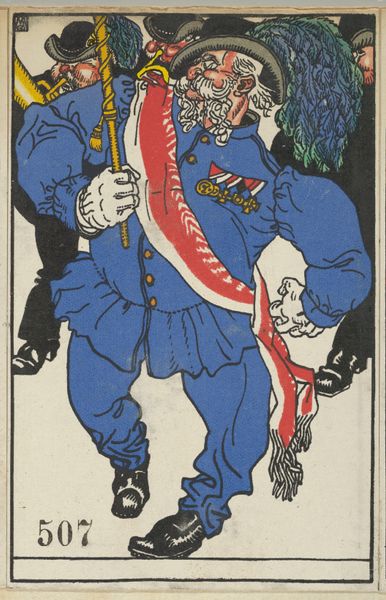
Copyright: Kukryniksy,Fair Use
Curator: What a chilling piece. The Kukryniksy collective created this watercolor illustration, simply titled "Untitled," in 1942. Editor: Chilling indeed. Even at first glance, there’s something deeply unsettling about the grotesque exaggeration of Hitler next to a skeletal soldier, this cartoonish but unnerving rendering of death and decay. Curator: The immediate context is, of course, World War II. These artists worked as propagandists, creating works designed to sway public opinion, bolster morale, and demonize the enemy. Considering that, the paper, the speed of execution possible with watercolor, and the likely dissemination through print all point to readily available and rapidly produced propaganda. Editor: Absolutely. And the imagery is striking. The skeletal soldier is a walking symbol of death, a harbinger of doom offering a chilling salute. I'm struck by the sword piercing through his helmet; the swastika is plainly visible. The exaggerated, almost pitiful, portrayal of Hitler – note his exaggerated features and frantic posture – diminishes him, stripping him of power through mockery. His cap falling off. The detail is incredible: the artist does not omit anything from the Iron Cross to the Party badge. Curator: It's a powerful juxtaposition. This use of death makes a strong statement on their predicted future. There’s also a subtle but important element here – the comparatively finer rendering of death as something more impressive and frightening. Is that intended? Perhaps the artists believed it helped give credence to their propaganda? Editor: It might signify the inevitability of death or perhaps the ultimate fate of fascism. And perhaps they intended to showcase what death and destruction do in the name of war? Curator: A fascinating observation! Also, the artist likely chose this material – a fast and cheap medium that aided distribution – to maximize its message across Soviet society and forces. The watercolor gives it that feel. I am interested in knowing what these choices mean about their studio practice and audience interaction? Editor: The fact that they used such symbols as Nazi Germany and the death of the Third Reich really speaks to me about the artist’s memory. The death here functions as both warning and prophecy. Curator: This really offers a lens into the period, into the ways art functioned within that time. It gives such rich material insights, as well. Editor: Exactly, I’ll be thinking about this imagery for a while.
Comments
No comments
Be the first to comment and join the conversation on the ultimate creative platform.
